
Sample Border Stories
The tidbits below are from a growing collection of little anecdotes that are the sorts of things I expect to explore during the course of my journey around Switzerland. This selection of tales is not a collection of stories, but simply a taste of the border’s diverse flavor as it has evolved through the centuries. When I pass through these regions, I’ll learn much more about these places and so many more. There’s no shortage of things to think about as I hike through each day.
World War I and Swiss solidarity
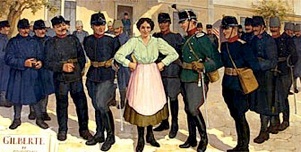
Georges Zaugg heads the “Fondation de la Petite Gilberte” that restored the previously dilapidated Hotel de la Gare. He says the purpose for bringing the place back to life was not only to toast the memory of the wartime heroine, but also to preserve a sense of Swiss solidarity. Gilberte’s niece, Eliane Chytil, hopes that the inn will encourage the French and German communities of Switzerland to learn to speak each other’s languages. (adapted from swissinfo.ch)
I intend to spend the night in the Hotel de la Petite Gilberte and to talk with the owners about the war years and the cultural divides among Swiss, most easily seen in their languages.
Büsingen, a small German island enveloped by Switzerland
After the Second World War, 96% of Büsingen’s residents voted to integrate into Switzerland. But Germany wouldn’t let go, and so Büsingen is still German. The village is 7.62 square kilometers, with a border just 17 kilometers long. It’s marked by 123 boundary stones. (adapted from swissinfo.ch)
I plan to meet with mayor Gunnar Lang, who grew up in the village and has been in the job for 17 years. He’s is proud of Büsingen and its unique role, and I expect he’ll give me a bicycle tour of its borders.
The Council of Konstanz and the dawn of international law
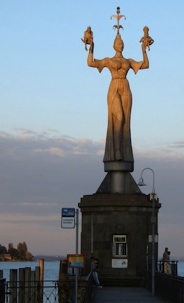
These were turbulent times, in which the Teutonic Knights accused Poland of defending pagans. In Poland’s defense, the rector of the Jagiellonian University in Kraków, Poland, claimed that all nations, including pagan ones, have the right to self-government and to live in peace and possess their land—some of the earliest concepts of international law.
Still, John of Falkenberg accused Poles of being “guilty of the abominable crime of using Pagan allies in their war against the German Order.” He proposed that “the Poles must be exterminated.” In a tone echoing certain religious fanatics to this day, Falkenberg argued that “the Emperor has the right to slay even peaceful infidels simply because they are pagans; the Poles too should be killed for allying themselves with the infidels and resisting Christian Knights. The Poles deserve death for defending infidels, and should be exterminated even more than the infidels; they should be deprived of their sovereignty and reduced to slavery.” (adapted from Wikipedia.org)
I plan to visit with priests who know the religious history of this region—a window into the story of Christianity.
Jewish Museum in Hohenems
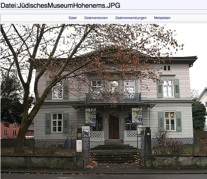
Today, there are still many visible traces of Jewish history: the cemetery, the former synagogue, the former Jewish school, the former care center for the elderly and poor of the Jewish community, as well as numerous homes and factory owner's villas. I intend to bicycle with the director of the Jewish Museum.
Schloss Vaduz & the Principality of Liechtenstein
By treaty Switzerland handles Liechtenstein’s defense—but it’s also been responsible for the most celebrated incursions. In 2007 a company of Swiss troops accidentally crossed several kilometers into Liechtenstein in what was much ballyhooed as a “Swiss invasion.” In a 2003 referendum, the citizens of Liechtenstein bucked the European trend by giving their popular monarch even more power after the prince threatened to sell his property and move to Austria if the new constitution failed.
Bernina Express turns 100
Piz Bernina’s first ascent
Piz Bernina, at 4,049m is the highest peak in the Eastern Alps—and the most easterly 4,000m peak in the entire Alps. Because of its height and ease of climbing, it’s an extremely popular peak and I’ll expect crowds on the various summits. Fortunately, there is also a large hut just on the Italian side of the border that I’ll very likely stay in, the Rifugi Marco e Rosa.
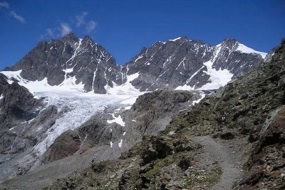
"At 6 p.m. we stood on the ardently desired lofty peak. On soil that no human had trodden upon before. On the highest point of the canton at 4052 meters above sea level.
"Serious thoughts took hold of us. Greedy eyes surveyed the land up to the distant horizon, and thousands and thousands of mountain peaks surrounded us, rising as rocks from the glittering sea of ice. We stared amazed and awe-struck across this magnificent mountain world."
Theodulpass smugglers
During WWII mountain guides smuggled food and supplies from Switzerland across Theodulpass into Italy. Mussolini told the police to look the other way, as Italians were starving. But occasionally his police would have to try to arrest someone to “prove” the laws were being enforced. These mock chases launched today’s recreational mountain races.
I’ll dine at the hut with a descendant of one of these smuggling guides if possible, or at least a current mountain racer.
Matterhorn to Dent d’Herens—the history of alpinism
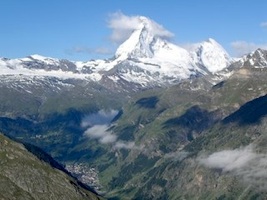
The Matterhorn was the last of the great unclimbed peaks in the Alps. Edward Whymper’s famous ascent of the Hörnli Ridge in 1865 took place after six attempts on the Lion Ridge. I hope to make my traverse in the company of a descendent of Peter Taugwalder, who survived the disaster with Whymper in which four people fell to their deaths. Several Taugwalders are currently mountain guides, still based out of Zermatt. One was featured in The Alps’s filmed reenactment of the first ascent.









